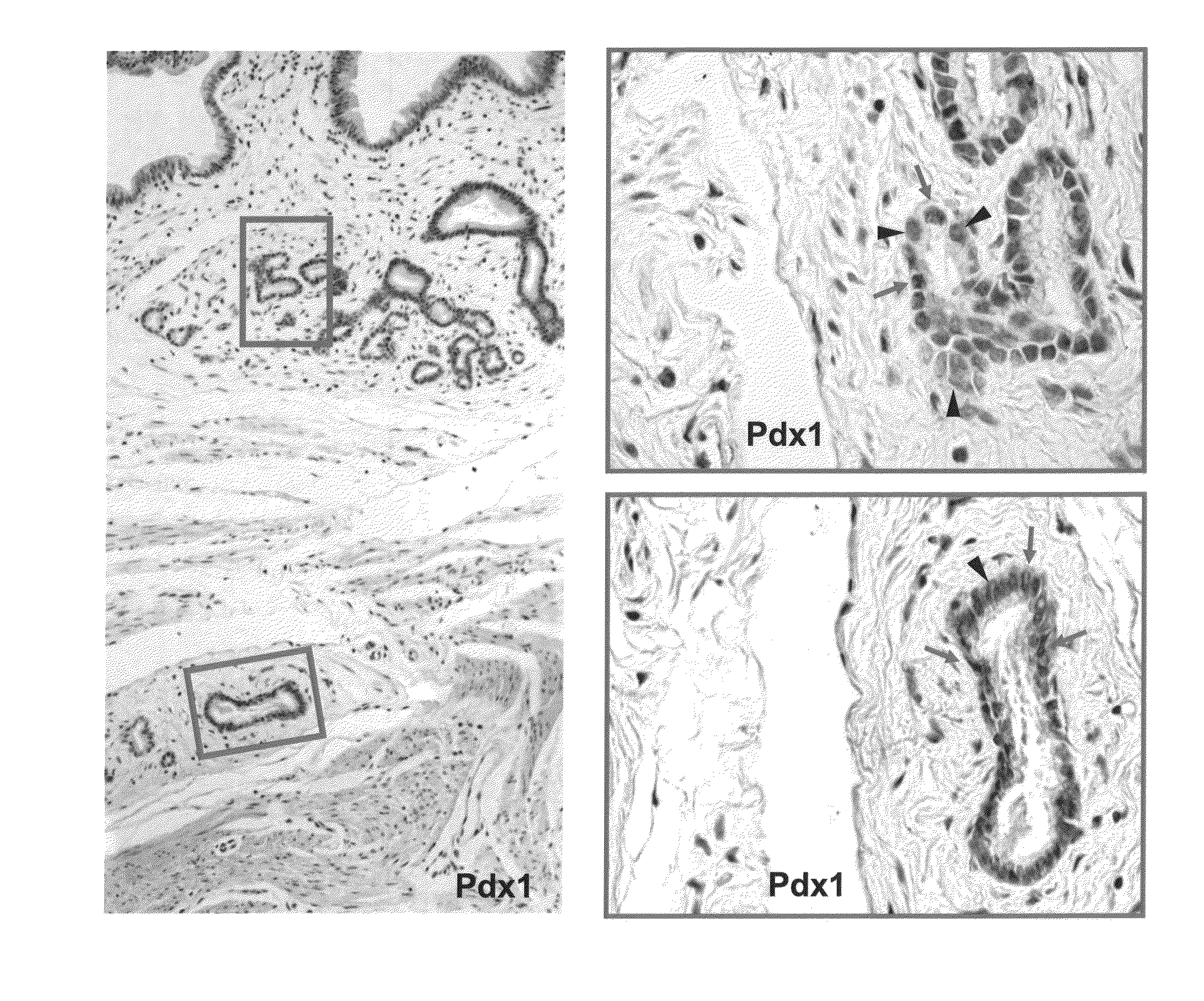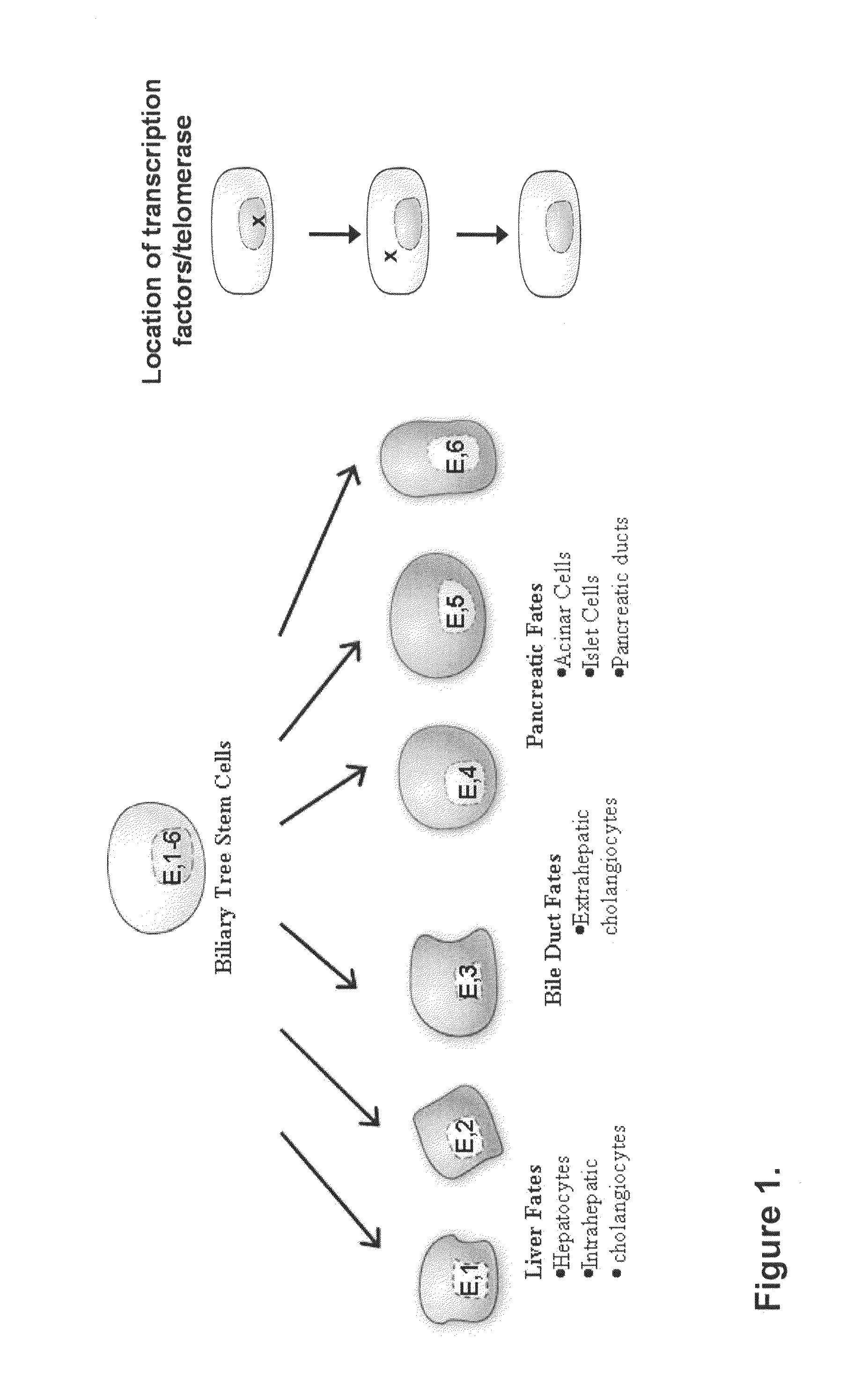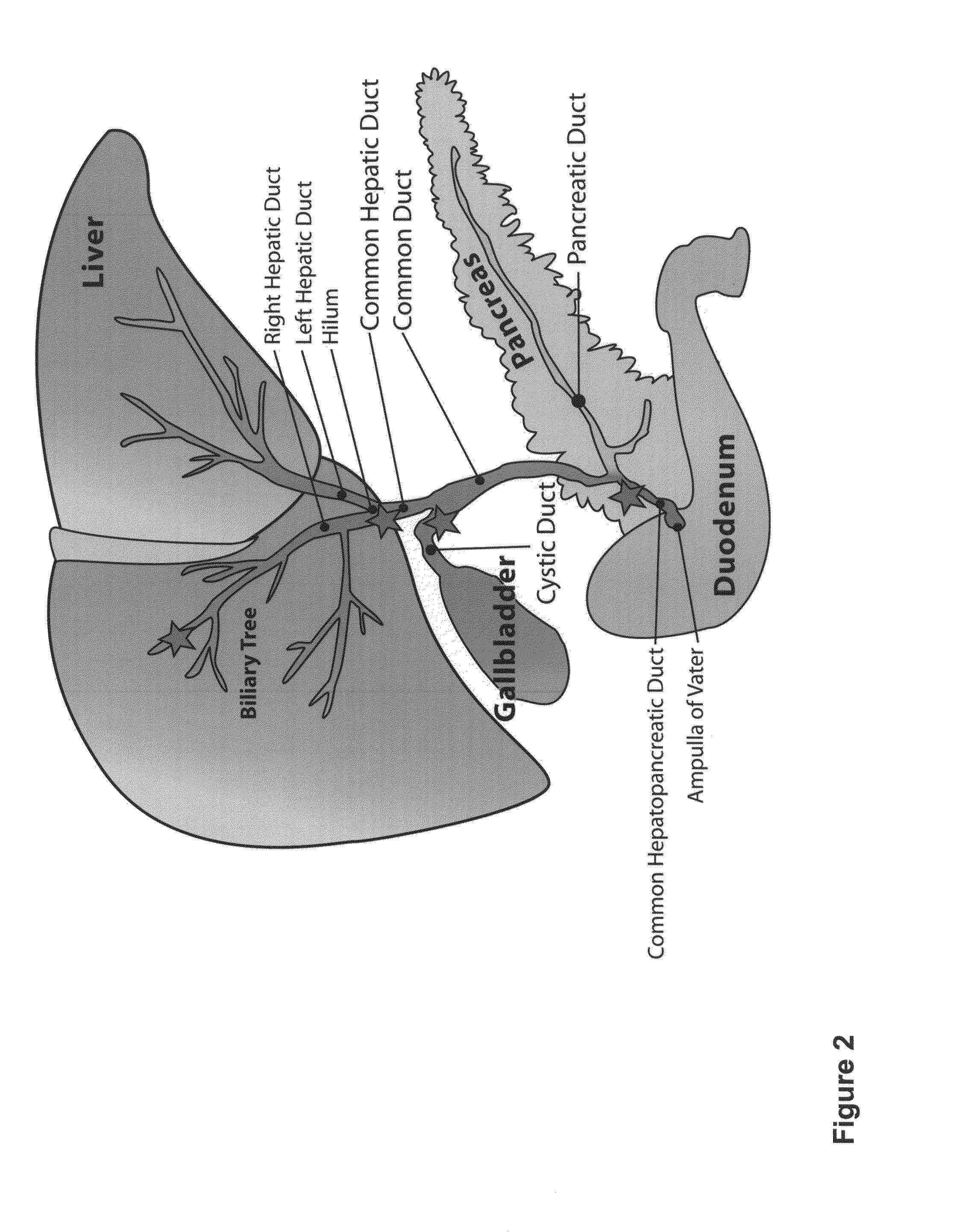Multipotent stem cells from the extrahepatic biliary tree and methods of isolating same
a multi-potent stem cell and biliary tree technology, applied in the field of multi-potent progenitor cells, can solve the problems of inherently limited donor availability, inability to differentiate, and inability to tolerate toxicity, so as to achieve the effect of faster and more efficient differentiation
- Summary
- Abstract
- Description
- Claims
- Application Information
AI Technical Summary
Benefits of technology
Problems solved by technology
Method used
Image
Examples
example i
Cell Preparation
[0087]Enzymatic dissociation may be carried out in the presence of protease(s), such as collagenase(s), and / or nuclease(s), such as DNase. Methods of enzymatic dissociation of liver cells are described and practiced in the art. By way of example, methods for the isolation and identification of the hepatic progenitors have been described in, for example, U.S. Pat. No. 6,069,005 and U.S. patent application Ser. Nos. 09 / 487,318; 10 / 135,700; and 10 / 387,547, the disclosures of which are incorporated herein in their entirety by reference. Indeed, various procedures exist for preparation of cell suspensions. It is to be understood, therefore, that the scope of the present invention is not to be limited to a specific method of procuring whole tissue or preparing cell suspensions thereof.
example ii
3D Culture Conditions
[0088]3-dimensional (3-D) gels may be formed by mixing the matrix components, the hormones, cytokines, growth factors, nutrients and the basal medium into hyaluronans that are liquid when not cross-linked and become gelled when cross-linked. The details of the preparation of these are published elsewhere, e.g., W. S. Turner, E. Schmelzer, R. McClelland et al., J Biomed Mater Res B Appl Biomater 82B (1), 156 (2006); and W. S. Turner, C. Seagle, J. A. Galanko et al., Stem Cells 26 (6), 1547 (2008), the disclosures of which are incorporated herein in their entirety. The cultures are typically maintained for 2-4 weeks or longer and then analyzed by histology, gene expression assays such as endpoint and quantitative RT-PCR, immunofluorescence and protein expression assays such as Western blots, and metabolomic footprinting.
[0089]The major components of the gel complexes are forms of chemically-modified hyaluronans. Carbylan-S (or, CMHA-S) is a carboxymethlated hyalur...
example iii
Evidence of Multipotency
[0092]After 7-30 days or longer of culturing Biliary Tree Stem Cells or cell populations under self-replication conditions (Kubota's Medium, or equivalent, in combination with culture plastic or hyaluronans), monolayer cultures of the remaining cells (i.e., Biliary Tree Stem Cells) are transferred to a differentiation medium, wherein the stem cells undergo rapid shape changes and changes in gene expression within 48 hours. All the differentiation media consists of modifications to the medium used for self-replication (e.g., Kubota's Medium or equivalent) such that the hormonally defined medium will contain the components in the self-replication medium plus supplementation with calcium (≧0.5 mM), copper, bFGF; this is referred to as “modified medium”. To achieve a specific adult cell type, the following are required:
[0093]Liver: lineage restriction to liver fates (e.g., hepatocytes) may be achieved by embedding the Biliary Tree Stem Cells into hydrogels of hya...
PUM
| Property | Measurement | Unit |
|---|---|---|
| Time | aaaaa | aaaaa |
| Time | aaaaa | aaaaa |
| Time | aaaaa | aaaaa |
Abstract
Description
Claims
Application Information
 Login to View More
Login to View More - R&D
- Intellectual Property
- Life Sciences
- Materials
- Tech Scout
- Unparalleled Data Quality
- Higher Quality Content
- 60% Fewer Hallucinations
Browse by: Latest US Patents, China's latest patents, Technical Efficacy Thesaurus, Application Domain, Technology Topic, Popular Technical Reports.
© 2025 PatSnap. All rights reserved.Legal|Privacy policy|Modern Slavery Act Transparency Statement|Sitemap|About US| Contact US: help@patsnap.com



